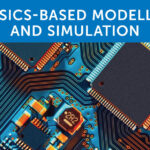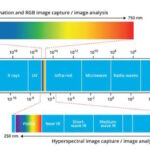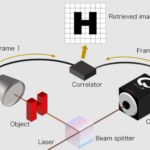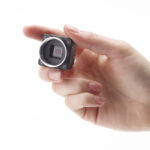Teledyne FLIR IIS announced the Forge 1GigE IP67, the latest in its industrial camera series designed to perform in harsh industrial environments while ensuring highly efficient production capabilities. Forge 1GigE IP67 is the latest in our commitment to deliver advanced imaging systems for factory automation. The Forge 1GigE IP67 camera series has an IP67 cylindrical […]
Vision systems
Intelligent industrial camera with 4K streaming
IDS expands its product line for intelligent image processing and launches a new IDS NXT malibu camera. It enables AI-based image processing, video compression, and streaming in full 4K sensor resolution at 30 fps – directly in and out of the camera. The 8 MP sensor IMX678 is part of the Starvis 2 series from […]
Radiometric version of compact thermal camera core
Teledyne DALSA announced a radiometric version of its MicroCalibir Long Wave Infrared (LWIR) compact camera platform that delivers accurate temperature measurements of +/-2°C or +/-2%. Developed and manufactured in Canada, the small and lightweight MicroCalibir platform is the result of the latest advances made by Teledyne DALSA’s integration of their in-house 12 μm microbolometer pixel technology with […]
New AI camera with Delta Controls’ Red5 BACnet controller
Delta unveiled a wide range of integrated building solutions at ISC West 2024. The showcase included a real demo of the new VIVOTEK AI surveillance camera, which is capable of adapting to adverse lighting conditions to provide intelligent object detection and analysis. The camera is also seamlessly integrated into Delta Controls’ new Red5-PLUS-ROOM controller, an […]
Machine vision meets automation and robotics: IDS at Automate 2024, booth 2855
From the 6th to 9th of May 2024, Automate will take place in Chicago, Illinois at the McComick Place Convention Center. At North America’s largest robotics and automation event, industrial camera manufacturer IDS will be presenting some exciting new technologies from our pillars of Area scan, 3D, and AI vision at booth 2855. These technologies […]
New online platform for selecting optimal machine vision components
Teledyne FLIR IIS is pleased to announce SightBase – an advanced Software-as-a-Service (SaaS) platform that accelerates the design-in cycles for imaging systems and reduces customer spending. This new platform includes a virtual lab that increases user confidence when selecting a system configuration to meet their vision application requirements. SightBase, now available online, delivers an intuitive […]
What is hyperspectral imaging?
Hyperspectral imaging is the most comprehensive of the three common image processing technologies. The other two technologies are red-green-blue (RGB) imaging and multispectral imaging. All three are noninvasive and nondestructive and give engineers and scientists different ways to analyze objects. RGB imaging can be quick and inexpensive to implement and provides basic information about an […]
Flexible artificial intelligence optoelectronic sensors towards health monitoring
Researchers at Tokyo University of Science (TUS) have developed a flexible paper-based sensor composed of nanocellulose and zinc oxide (ZnO) nanoparticles that operate like the human eyes and brain. The sensor is energy-efficient, responds to optical input in real-time, and is both flexible and easy to dispose of, making it ideal for health monitoring applications. […]
What are the seven types of quantum sensors?
The seven types of quantum sensors include chemical sensors, clocks, gravimeters, imaging, interferometers, magnetometers, and thermometers. Several types of quantum sensors are already in use, and more are being developed for commercialization. They can be used in a wide variety of applications from earth sciences to molecular biology and wide band gap power semiconductors. Chemical […]
New modular USB3 machine vision camera series
Teledyne FLIR IIS introduced the new Dragonfly S USB3 camera series to its machine vision portfolio. The new series is a result of Teledyne’s constant commitment to set and enhance vision industry standards for customer success. It addresses the market’s essential need for a modular, compact, and lightweight camera for at-scale manufacturing, volume-based applications, and […]










